


Select a letter to be taken down to that letter.
Act of Parliament - An Act of Parliament creates a new law or changes an existing law.
Band saw – The cutting blade is a long, continuous band, rotating around two or more wheels within the machine case. Depending on the blade, the bandsaw can make straight or curved cuts. Not suitable for students under 16, and only under close supervision for older students. See BS4163:2021 clause 13.7.
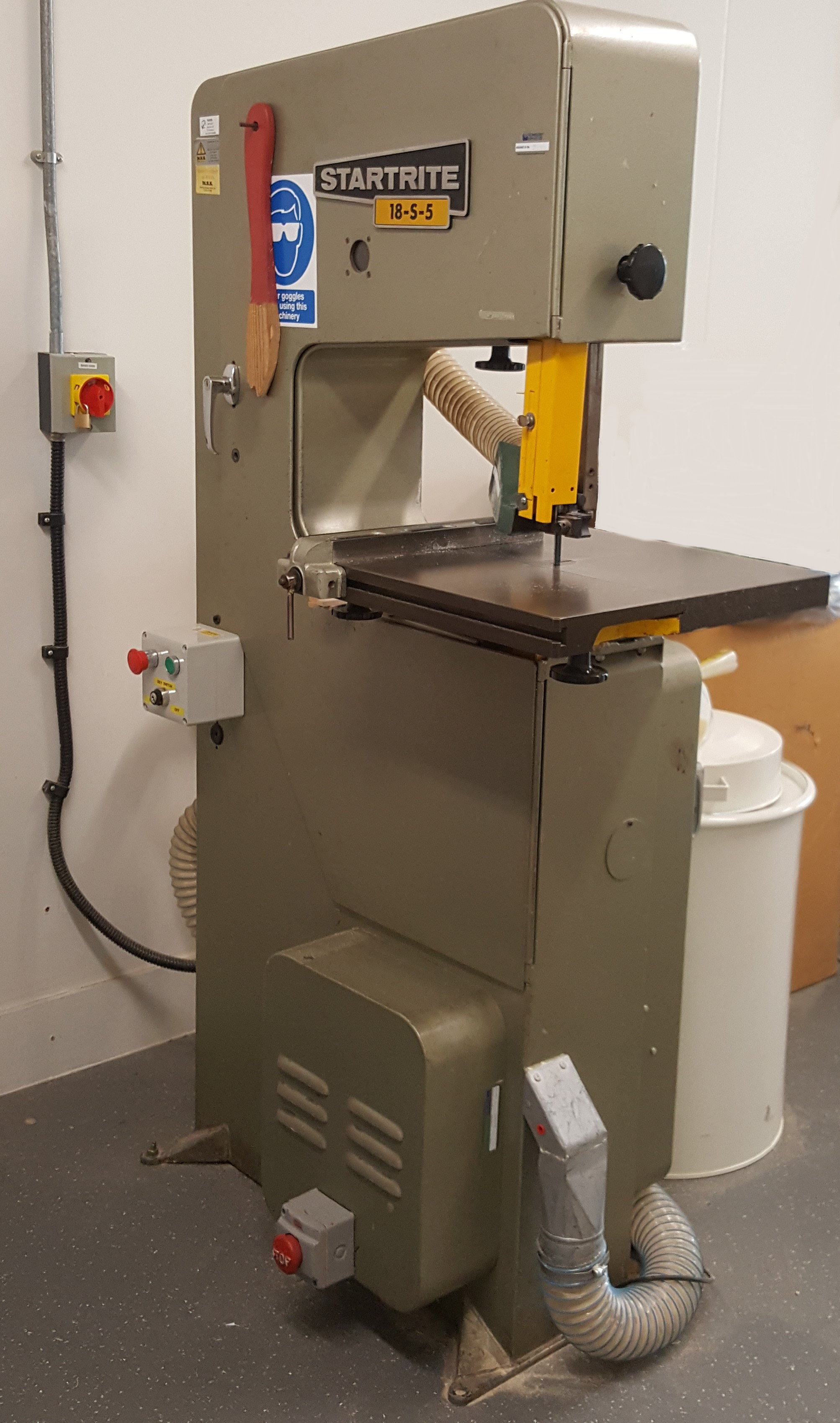
Bench grinder – Usually a central motor with an abrasive grinding wheel mounted on each side. The grinding wheels must be fully guarded. It may be used for sharpening tools. See BS4163:2021 clause 14.5.
Bench drill - see pedestal drill.
Brazing hearth - In a school workshop may be a brazing hearth, chip forge or crucible. All are used for working with metals, for joining pieces, or melting metals with low melting points for casting. May also be used for enamelling or dip coating. See BS4163:2021 clause 15.3.
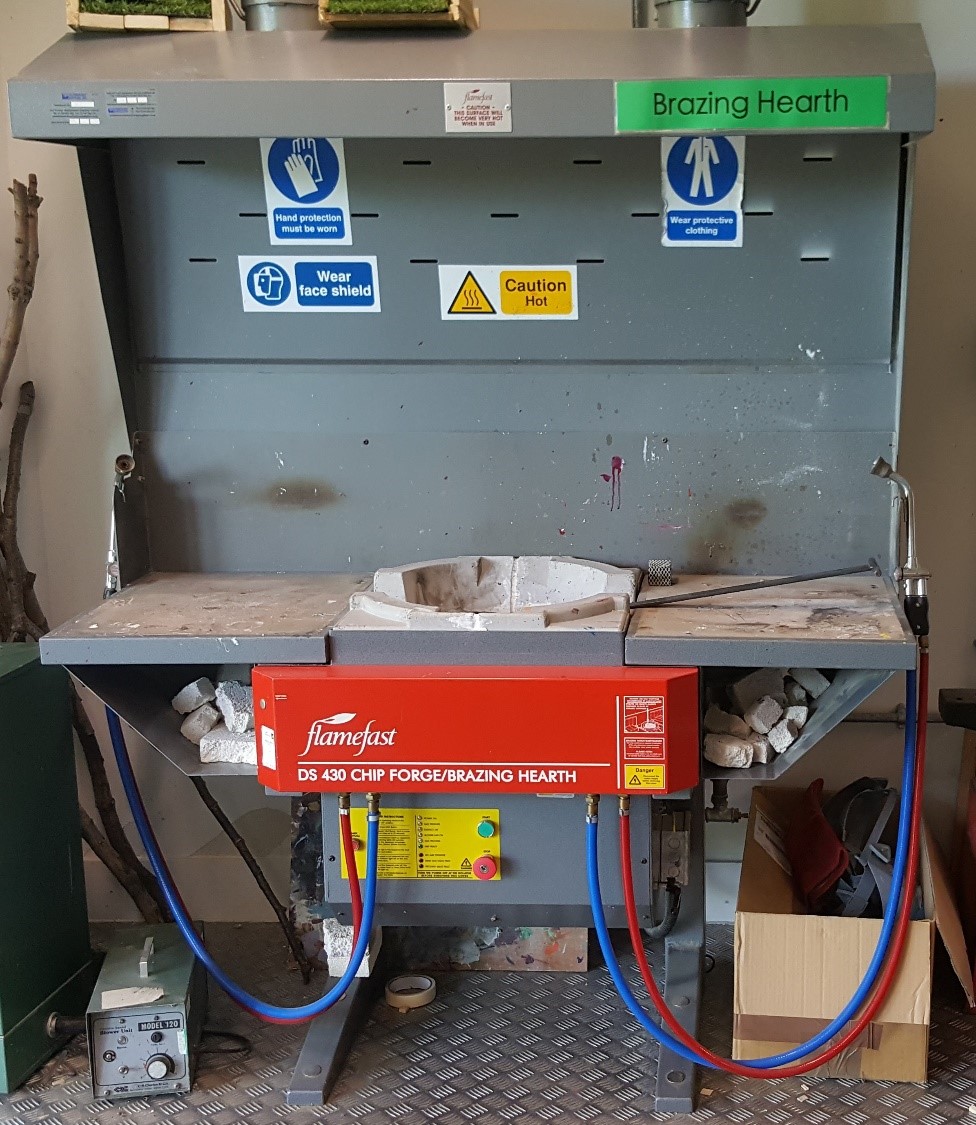
BS4163:2021 Health and safety for design and technology in educational and similar establishments – Approved Code of Practice. An important reference document for all schools offering Design & Technology.
Buffer / Buffing machine - see metal polishing machine.
Centre lathe – Used for working cylindrical metal rods. Many different tools are available to achieve different results. See BS4163:2021 clause 14.2.
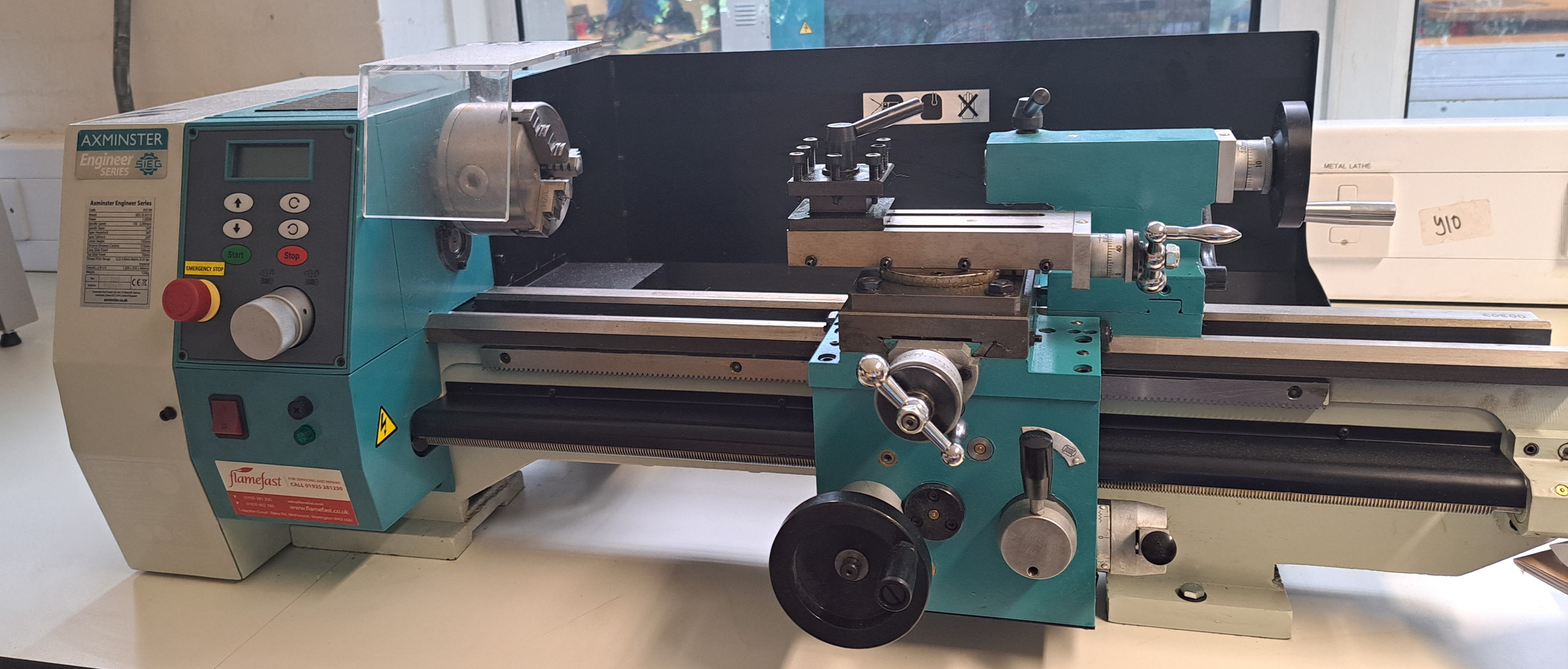
Circular saw – See table saw.
Code of Practice – Each Approved Code of Practice (ACOP) is approved by the HSE. It gives practical advice on how to comply with the law. If you follow the advice you will be doing enough to comply with the law in respect of those specific matters on which the Code gives advice. You may use alternative methods to those set out in the Code in order to comply with the law. However, the Code has a special legal status. If you are prosecuted for breach of health and safety law, and it is proved that you did not follow the relevant provisions of the Code, you will need to show that you have complied with the law in some other way or a Court will find you at fault.
Control of Substances Hazardous to Health Regulations 2002 (COSHH) - A Statutory Instrument.
Dust extraction – see LEV
Electric braking device – Adds power or magnetism to slow or reverse the motor, to bring the machine to a stop in under 10 seconds.
Electricity at Work Regulations 1989 - A Statutory Instrument.
Emergency stop switch (E-stop) – Tested to more rigorous standards than a stop switch. Most E-stops are required to latch. They are generally required to be a red mushroom-headed switch on a yellow background. Confusingly, there are different specifications for different situations.
Foot stop switch – see third limb stop switch.
Handed tools – Tools such as hand files and Surforms are cut so that their blades are only effective when used by right-handers. Dreadnought files and Shinto rasps are not handed and can be used equally well by left- or right-handers.
HIPS – High impact polystyrene. Bought as sheets of different thicknesses and colours, this plastic is easily worked. 1mm is the most popular thickness. Often used with a vacuum former.
HSE – The Health and Safety Executive (HSE) is Britain’s national regulator for workplace health and safety. It prevents work-related death, injury and ill health. HSE is an executive non-departmental public body, sponsored by the Department for Work and Pensions.
Jig – A jig is used to hold a workpiece so that the same action can be repeated. In DT it is particularly used for routing, so that multiple pieces of wood can be routed in identical positions to match, for example, both sides of a unit to take shelves or drawers. Usually made with oddments of wood.
Kerf – The thickness of the slot cut by a blade. Circular saws typically have a kerf of about 3mm, while bandsaws usually have a kerf of about 1mm.
Key operated spring return switch – a specific type of switch used to turn on power for a workshop. It requires a key to turn it on, but the key automatically returns to the insert position. Never leave a key in such a switch.
Latching switch – Once pressed, a latching switch stays in the off position until specifically reset by twisting, pulling or using a key. Compare non-latching switch.
LEV – Local exhaust ventilation. In DT, commonly called dust extraction, although LEV is also used for fume extraction, including for brazing hearths.
Lockable isolator – A type of switch which can be locked, usually with a padlock. A fail-safe way of ensuring a machine is not “live” before starting any maintenance.
Manual Handling Operations Regulations 1992 - A Statutory Instrument.
Metal band saw – see power hack saw.
Metal guillotine – Used for cutting sheet metal. It may have a long blade which cuts the whole cut at the same time, or a shorter blade which cuts more like scissors or shears, or wheels which cut more like a tin opener.
Metal polishing / buffing machine – Most buffers have a central motor, with a polishing mop on each side. They must not be used by two people at the same time. The intention is to have two different mops to be used by the same person at different stages of the polishing process. Each mop, and associated polishing compound, should be used for polishing one material only, otherwise you may add more dirt than you polish off. See BS4163:2021 clause 14.5.
Non-latching stop switch – When pressed will release back to the normal position. Spring operated. Will not hold the circuit “off”. Compare latching switch.
No-volt release switch – When the power is cut, the switch defaults to “off” so the machine will not start when power is restored.
Personal Protective Equipment at Work Regulations 1992 - A Statutory Instrument.
Pedestal / bench drill – A drill which is mounted on a vertical post, variously called a pedestal, bench or pillar drill, according to size and other details. The drill cuts vertically downwards. See BS4163:2021 clause 14.4.

Portable drill – A hand-held drill. Compare pedestal drill.
Portable sander – A hand-held sanding machine, sometimes called an orbital sander, or mouse sander. Compare sanding machine.
Power fret saw - A saw with a narrow blade, used to cut curved outlines in thin material. Also called a power scroll saw. A popular brand is Hegner, and this is sometimes used, incorrectly, to identify power fret saws of other brands. See BS4163:2021 clause 13.7.

Power hack saw / metal band saw – Used to cut metal rods or tubes. The most common design has a clamp to hold the metal in place. The blade is lowered onto the metal, and cuts downward, with the aid of gravity. When the blade clears the metal, the machine automatically switches off. See BS4163:2021 clause 14.8.
PUWER – Provision and Use of Work Equipment Regulations 1998. A Statutory Instrument.
Room e-stop – see Work area emergency switching systems.
Riving knife – Behind the blade of a circular (table) saw is the riving knife. It should be thicker than the plate of the saw, but thinner than the kerf. It helps stop the wood closing on the blade which would cause it to kick back.
Sanding machine - May be a belt sander, a disc sander or a bobbin sander. Dust extraction is essential. A belt sander is also known as a linisher. It is good practice to have a no-finger-zone marked on the table. See BS4163:2021 clause 13.6.
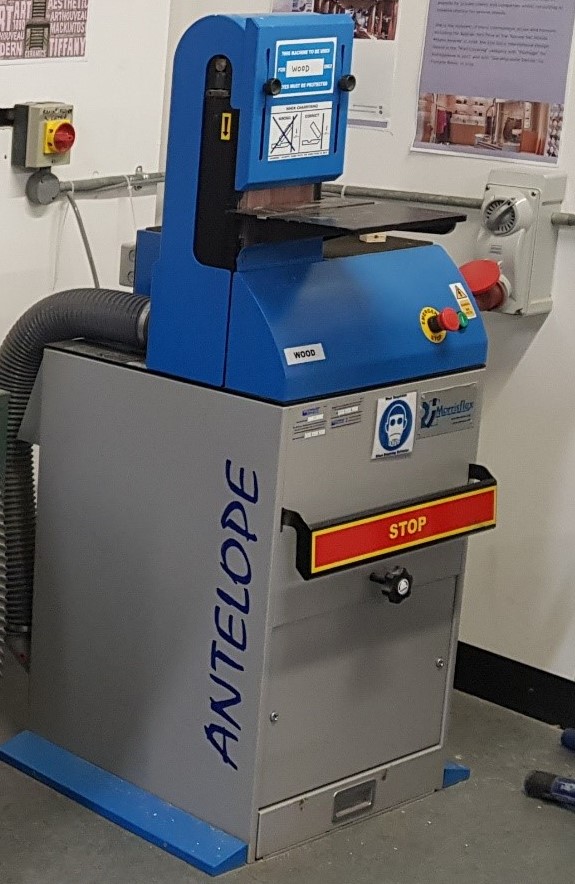
Statutory Instrument – A Statutory Instrument is the most common form of secondary legislation. It is a law.
Stop switch – Usually, but not necessarily, mushroom headed, red for most electrical installations (as opposed to water or gas), may or may not latch. Compare Emergency stop switch.
Strip heater – Uses heat to soften acrylic in a narrow strip so that the acrylic can be bent over a former. Older models often lack essential guards. See BS4163:2021 clause 16.6.
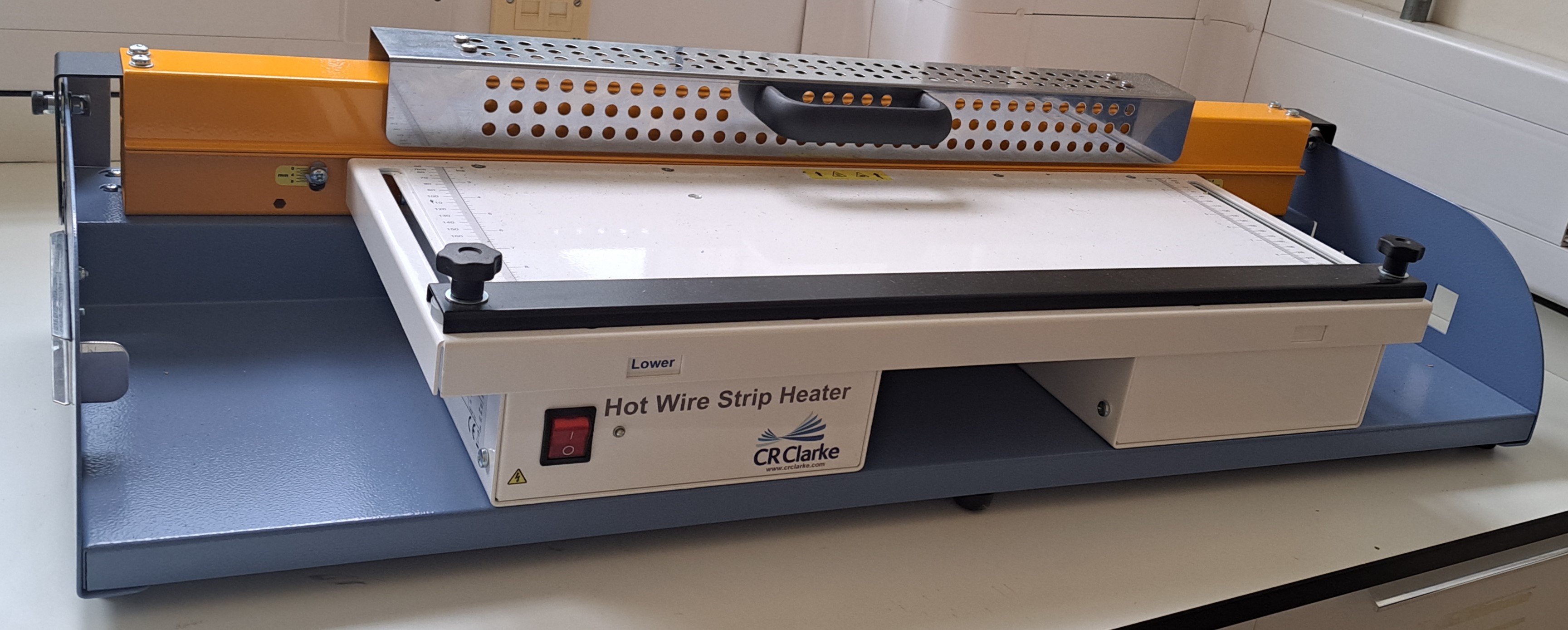
Table / circular saw – A large, static machine, used for cutting larger pieces of wood. A circular blade projects up through a slot, and is covered by a crown guard. Not suitable for students. See BS4163:2021 clause 13.7.

Third limb stop switch – Operated by foot, knee or hip. Although third limb stop switches are useful on many machines, they are only required to be fitted on drilling machines.
Vacuum former – Used to shape HIPS over custom-made moulds, using heat to soften the HIPS. See BS4163:2021 clause 16.4.
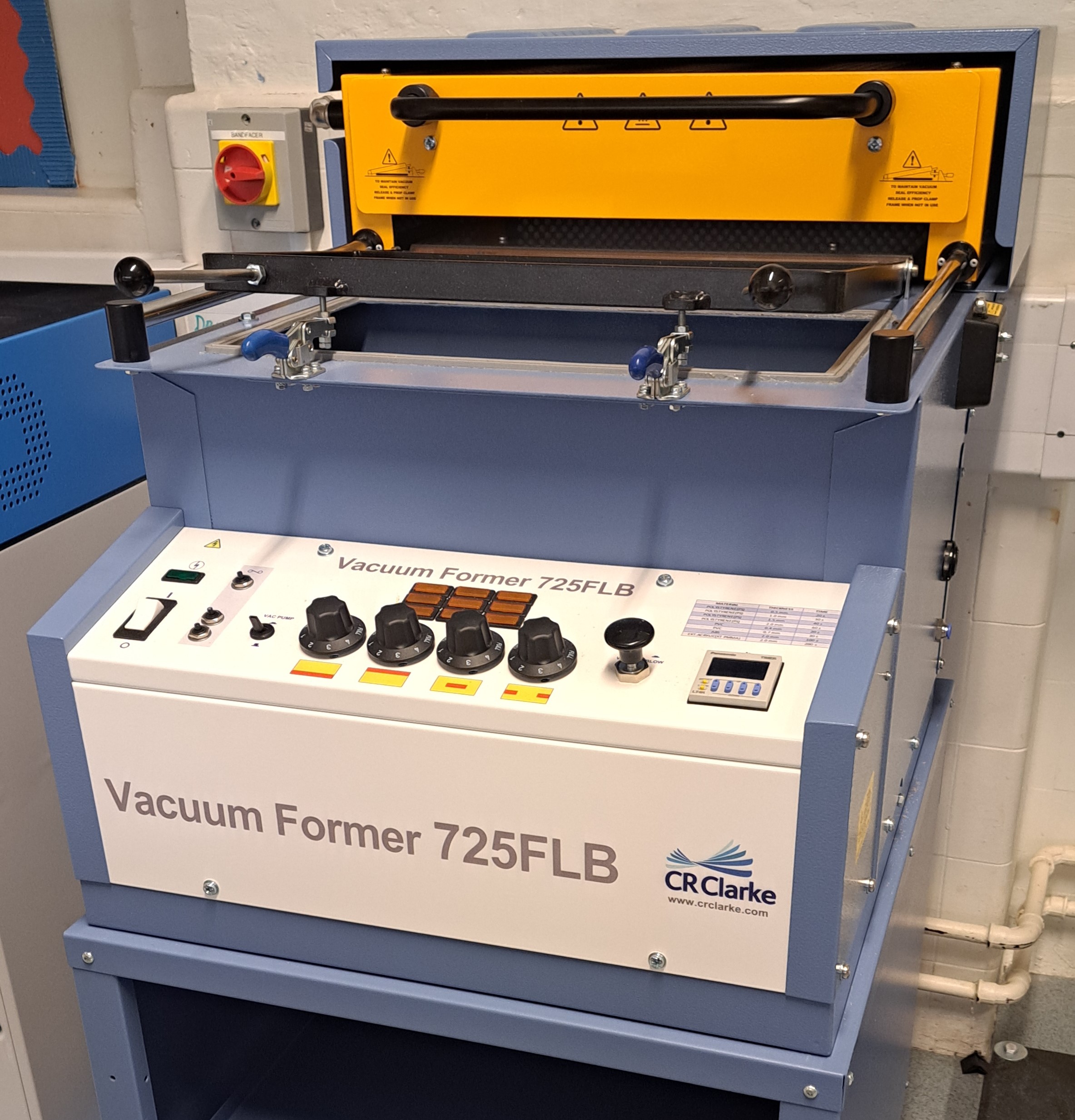
Work area emergency switching systems – also called room e-stops. See BS4163:2021 clause 7.2.5.